Navigating the Cyber Threat Landscape of Smart Cities

The rise of smart cities, fueled by interconnected devices and innovative technologies, presents unprecedented opportunities for urban development and citizen services. However, this increasing interconnectedness also introduces a heightened risk of cyberattacks, particularly targeting critical infrastructure at state and local levels.
As smart cities integrate previously separate infrastructure systems into a single network environment, the digital attack surface expands significantly. The sheer number of interconnected devices, many with inherent vulnerabilities, provides numerous entry points for malicious actors. Reports indicate that state and local governments require additional resources, shared intelligence, and coordination to effectively combat these threats.
Cyber resilience and incident response are crucial paradigms for navigating this complex cyber-physical landscape. While research in this area is active, empirical studies focusing on frameworks and systems that address cyber-physical systems (CPS) security in smart cities are still emerging. A systematic literature review highlighted that much of the existing research focuses on the "detection and analysis" phase of incident response, with limited attention paid to other critical stages like "response," "recovery," and "prevention". Furthermore, areas like "forensics" and "cyber resilience" also require further investigation.
One of the most prominent threats facing smart cities is ransomware. Municipalities are increasingly in the crosshairs of "Ransomware as a Service" (RaaS), which makes encryption malware more accessible. The cyberattack against the city of Atlanta serves as a stark reminder of the potential for significant disruption and economic impact from such attacks.

Building trust in smart city systems is paramount for their successful adoption and operation. This trust is underpinned by several key characteristics, including:
- Security: Protecting the system and its data from unauthorized access, use, disclosure, disruption, modification, or destruction. This requires ongoing maintenance and adaptation to counter evolving adversarial techniques.
- Reliability: Ensuring the system performs its intended function without failure or interruption. Considerations include methods to reduce the impact of planned downtime.
- Safety: Avoiding injury or damage to persons, facilities, and the environment. This involves addressing potential hazards and ensuring users are aware of how to interact safely with the systems.
- Privacy: Protecting the personal information collected by smart city systems. This necessitates transparency about data collection and usage, and offering users options regarding their data.

Securing smart cities requires a joint effort between local administrations and private sector organizations. Identifying and prioritizing critical assets, establishing baselines for normal operation, ensuring rapid component replacement in case of compromise, and securely segmenting critical assets are essential steps.
The Department of Homeland Security (DHS) can play a crucial role in supporting this stakeholder community by helping to anticipate and plan for the risks associated with cyber-physical infrastructure in smart cities. This includes facilitating communication and engagement, and potentially providing federal assistance.
Cybersecurity and data privacy are critical considerations in the planning and implementation of smart cities due to the increasing interconnectedness and reliance on digital technologies. These interconnected systems manage essential urban services, collect vast amounts of data, and therefore present significant cybersecurity and data privacy risks.

Cybersecurity in Smart Cities:
- Heightened Risk: Smart cities are at a heightened risk of cyberattacks due to the vast network of interconnected devices, including IoT infrastructure, which expands the attack surface. State and local governments, often lacking sufficient resources and using outdated technology, are seen as prime targets.
- Proactive Measures: Municipalities must be proactive rather than reactive in addressing cybersecurity to keep pace with evolving threats. This includes the need for additional resources, shared intelligence, and coordination.
- Frameworks and Best Practices: Utilizing frameworks like the National Institute of Standards and Technology (NIST) Cybersecurity Framework is recommended for developing comprehensive cybersecurity strategies. Cybersecurity encompasses processes, standards, technology, and education, requiring a layered approach that combines people, processes, and technology for effective defense.
- Risk Assessment and Vulnerability Management: A crucial first step is recognizing vulnerability through comprehensive risk assessments across all departments to identify potential risks and security gaps. Understanding network and system vulnerabilities is essential for developing effective defenses.
- Policies and Procedures: Developing written cybersecurity policies and procedures for all employees and ensuring their adoption is vital for managing human and technical weaknesses. These policies should address acceptable use, access management, and the increasing use of personal mobile devices for work.
- Incident Response Planning: Preparing for cyberattacks is no longer optional. Local governments must develop comprehensive written incident response plans to restore critical systems and networks quickly. These plans should outline procedures for identifying, investigating, and responding to incidents, drawing on resources like the NIST framework.
- Secure Design and Implementation: Smart city infrastructure should be designed with security in mind from the outset, including secure hardware and software, strong encryption, and secure coding practices. Applying the principle of least privilege and enforcing multifactor authentication are crucial security measures.
- Network Segmentation: Dividing the smart city network into smaller segments can limit the damage caused by a cyberattack, preventing a breach in one area from compromising the entire system.
- Supply Chain Risk Management: Proactively managing ICT supply chain risks, using trusted vendors, and setting security requirements for software and hardware suppliers are essential to prevent exploitation of vulnerabilities. This includes scrutinizing vendors and their potential access to sensitive data.
- Operational Resilience: Developing contingencies for manual operations of critical infrastructure functions and training staff accordingly is necessary to maintain basic service levels in the event of a compromise. Regular workforce training on cybersecurity threats and best practices is also critical.
- Collaboration: Effective cybersecurity requires collaboration between government agencies, technology providers, and citizens, including sharing threat information. Public-private partnerships enhance the overall security posture by facilitating the exchange of expertise and threat intelligence.
- Addressing Specific Threats: Cybersecurity efforts must address various threats, including data breaches, disruption of services, ransomware attacks, denial-of-service attacks, and supply chain attacks, which can have severe consequences in interconnected smart city environments.

Data Privacy in Smart Cities:
- Major Concern: Data privacy has become a major concern as smart cities increasingly rely on collecting and analyzing vast amounts of data from sensors, cameras, and connected devices. Balancing the benefits of smart city technologies with the need to preserve individuals' data privacy is a significant challenge.
- Key Challenges: Challenges include the extensive collection and potential surveillance of individuals in public spaces, determining data ownership and control among various stakeholders, the risk of cybersecurity threats exposing sensitive information, and obtaining informed consent for data collection.
- Legal and Regulatory Frameworks: Governments need to enact clear and comprehensive legislation outlining the rights and responsibilities of all stakeholders involved in smart city initiatives, including defining data collection limits, ownership rights, and penalties for violations.
- Transparency and Accountability: Smart city authorities should adopt transparent practices in data handling, informing residents about the types of data collected, how it is used, and who has access to it. Establishing transparent frameworks for data governance, including accessible platforms for residents to access information and report concerns, is essential.
- Privacy by Design: Integrating privacy considerations into the design and implementation of smart city technologies from the outset ("privacy by design") is crucial. This involves conducting privacy impact assessments and implementing safeguards proactively.
- Collaboration and Standards: Public-private partnerships should prioritize privacy and data security by establishing guidelines and standards for data protection in collaboration with technology companies.
- Domain-Specific Considerations: Privacy must be addressed in specific smart city domains like transportation (anonymizing data, minimizing retention, secure communication) and energy management (encryption, secure protocols, anonymization).
- Public Awareness and Education: Raising public awareness and educating citizens about smart city technologies and data privacy issues is crucial for the successful implementation of privacy measures and building trust.
- Mitigating Mass Surveillance: The constant data flows in smart cities raise concerns about mass surveillance and the erosion of urban anonymity. Balancing the benefits of data analysis with privacy rights is essential, potentially through de-identification and anonymization where possible.
- Access and Control: Providing citizens with access to information about how their data is collected and used, and allowing them some control over it, can minimize perceptions of secrecy and foster trust.
- Trust as a Key Characteristic: Privacy is a key trust characteristic that smart city projects must address and be seen addressing to gain and maintain the confidence of users and operators. This involves careful consideration of data collection, minimization, anonymization, encryption, and who has access to the data.
- Compliance: Smart city systems must comply with legal, regulatory, and potentially integration requirements or standards related to data privacy at federal, state, and local levels. Ensuring fairness, including transparency, in how smart city systems operate and use data is also vital.

Overall, addressing both cybersecurity and data privacy in smart cities requires a multi-faceted approach that includes proactive planning, robust security measures, clear regulations, transparency, privacy-focused design, public engagement, and ongoing collaboration among all stakeholders. Prioritizing these aspects is crucial for building trust and ensuring the safe and sustainable development of smart urban environments.
In conclusion, while smart cities hold immense promise, a proactive and comprehensive approach to cybersecurity is essential to mitigate the growing threats. By focusing on cyber resilience, incident response, and building trust through robust security practices and public-private collaboration, municipalities can navigate the evolving cyber threat landscape and ensure the safe and reliable operation of their smart city initiatives.










